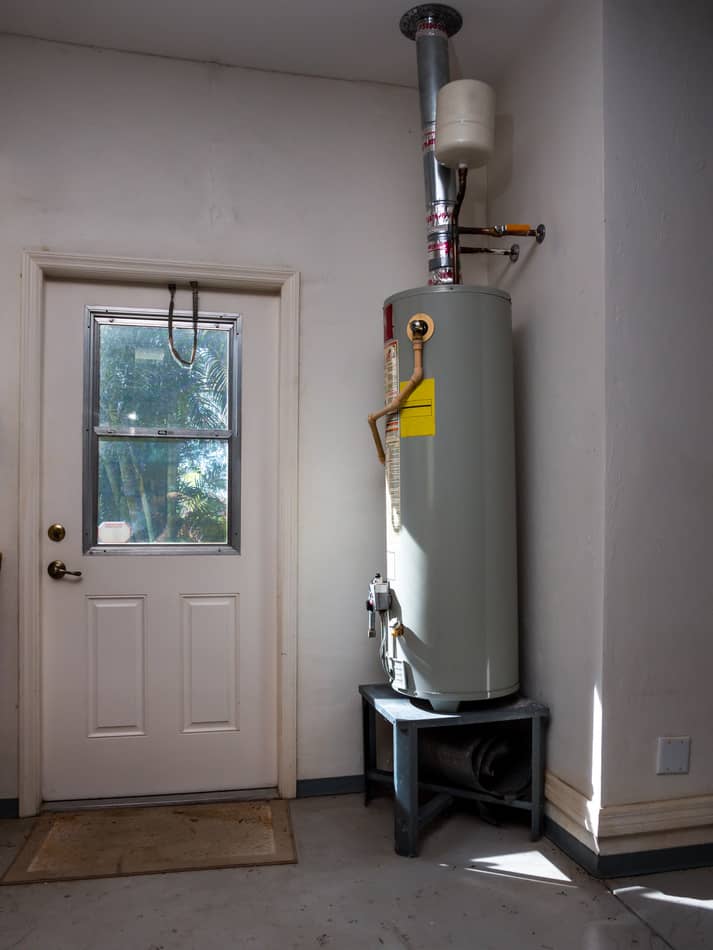Are you in search of facts and techniques concerning How to Maintain Your Water Heater & Prolong its Life?
:max_bytes(150000):strip_icc()/tankless-hot-water-system-in-the-basement-of-a-green-technology-home-529577258-77afda16fd494c6899a78000888c3204.jpg)
Hot water is important for everyday convenience, whether it's for a revitalizing shower or cleaning meals. To ensure your hot water system runs successfully and lasts much longer, regular upkeep is crucial. This post offers practical pointers and understandings on just how to preserve your home's hot water system to stay clear of interruptions and costly fixings.
Introduction
Preserving your home's hot water system may seem daunting, however with a couple of basic steps, you can ensure it runs smoothly for several years to find. This guide covers whatever from understanding your hot water system to do it yourself maintenance ideas and knowing when to call expert aid.
Significance of Preserving Your Warm Water System
Regular upkeep not only prolongs the lifespan of your hot water system but additionally ensures it operates successfully. Overlooking upkeep can result in lowered efficiency, greater power bills, and also early failure of the system.
Indicators Your Warm Water System Needs Maintenance
Recognizing when your hot water system needs interest can prevent major issues. Watch out for signs such as inconsistent water temperature level, weird sounds from the heater, or rustic water.
Understanding Your Hot Water System
Before diving right into upkeep jobs, it's helpful to comprehend the fundamental components of your hot water system. Usually, this consists of the hot water heater itself, pipelines, anode poles, and temperature controls.
Monthly Upkeep Tasks
Normal month-to-month checks can aid capture minor issues before they escalate.
Purging the Hot Water Heater
Purging your hot water heater gets rid of debris build-up, boosting performance and prolonging its life.
Checking and Replacing Anode Rods
Anode rods stop rust inside the storage tank. Checking and changing them when worn is essential.
Checking and Adjusting Temperature Settings
Adjusting the temperature setups guarantees optimum efficiency and security.
Do It Yourself Tips for Maintenance
You can do several upkeep tasks yourself to keep your hot water system in leading problem.
Checking for Leakages
Regularly inspect pipelines and links for leaks, as these can lead to water damage and greater costs.
Checking Stress Relief Valves
Checking the pressure relief valve ensures it operates appropriately and protects against extreme pressure accumulation.
Protecting Pipelines
Insulating hot water pipelines lowers warm loss and can conserve power.
When to Call an Expert
While DIY maintenance is valuable, some concerns call for expert know-how.
Complicated Issues Calling For Expert Help
Instances consist of major leakages, electrical problems, or if your hot water heater is regularly underperforming.
Regular Expert Maintenance Benefits
Specialist maintenance can consist of extensive inspections, tune-ups, and making certain compliance with safety criteria.
Final thought
Normal maintenance of your home's warm water system is vital for efficiency, durability, and cost financial savings. By following these ideas and knowing when to look for professional assistance, you can ensure a reliable supply of warm water without unanticipated interruptions.
How to Maintain an Instant Hot Water Heater
Before tinkering with your hot water heater, make sure that it’s not powered on. You also have to turn off the main circuit breaker and shut off the main gas line to prevent accidents. Also turn off the water valves connected to your unit to prevent water from flowing into and out of the appliance. 2. When you’re done, you have to detach the purge valves’ caps. These look like the letter “T†and are situated on either side of the water valves. Doing so will release any pressure that has accumulated inside the valves while at the same time avoid hot water from shooting out and burning your skin. 3. When the purge valves’ caps are removed, you have to connect your hosing lines to the valves. Your unit should have come with three hoses but if it didn’t, you can purchase these things from any hardware or home repair shops. You can also get them from retail stores that sell water heating systems. Read the user’s manual and follow it to complete this task properly. When the hosing lines are connected, open the purge port’s valves. 4. You should never use harsh chemical cleaners or solutions when cleaning your unit. Make use of white vinegar instead. It should be undiluted and you’ll probably use about 2 gallons. 5. Now flush your water heater. This task should probably take about 40 minutes. We can’t give you specific directions for this because the procedure is carried out depending on the type, model and brand of your heater. With that being said, refer to the user’s manual. 6. When you’re done draining the unit, you have to turn off the purge port valves again. Remove the hosing lines that you earlier installed on each of the water valves. Put the valve caps (purge port) back in their respective places and be very careful so as not to damage the rubber discs that are found inside these caps. 7. Now that everything’s back in place, check your user’s manual again to find out how to reactivate your water heating system. 8. Once it is working, turn one of your hot water faucets on just to let air pass through the heater’s water supply pipes. Leave the tap on until water flows smoothly out of it. https://www.orrplumbing.com/blog/2014/september/how-to-maintain-an-instant-hot-water-heater/

We hope you enjoyed our excerpt about How to Maintain a Hot Water Heater in a Few Simple Steps. Thanks so much for finding the time to read our content. Sharing is nice. Helping people is fun. Bless you for being here. Revisit us soon.
Call Today